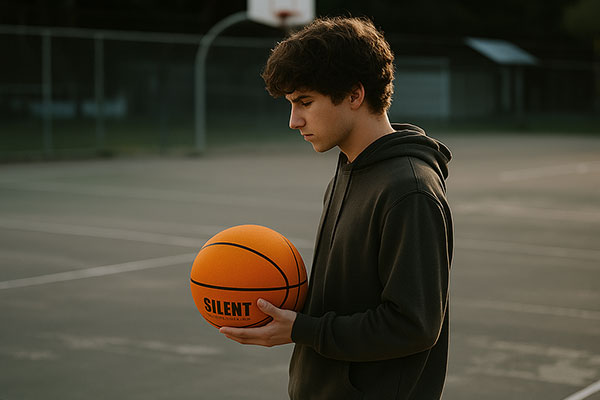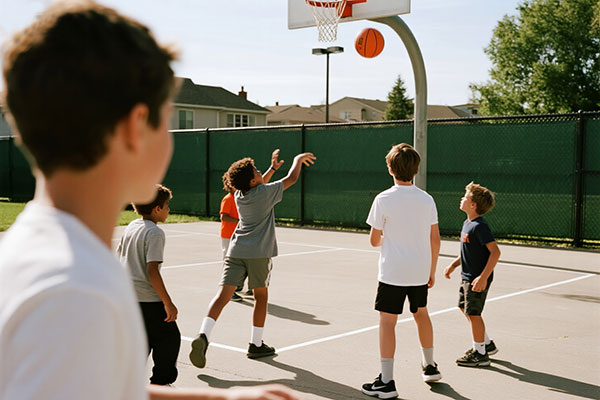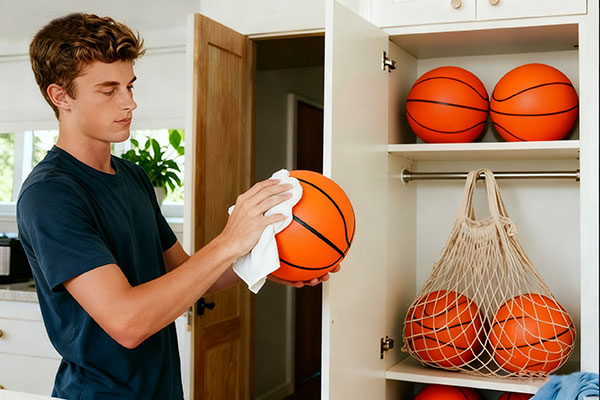Table of Contents

After experiencing the convenience of silent basketballs for indoor training, you may wonder: Can you use a silent basketball outdoor? The short answer is yes, but with important limitations that every user should be aware of.
While designed primarily for indoor use, occasional outdoor play is feasible if specific guidelines are followed. This guide details what happens when using a silent basketball outdoors, how to maximize its lifespan, and when to consider alternatives.
What Happens When Using Silent Basketballs Outdoors?

The fundamental issue lies in materials science. Quiet basketballs utilize specially optimized foam and composite materials for sound absorption, not abrasion resistance.
According to How to Choose a Basketball (Interior vs Outdoor), basketballs engineered for outdoor courts require rugged construction to withstand rough surfaces like asphalt and concrete, which is why indoor and outdoor basketball materials differ so significantly.
Three primary risks of outdoor use:
Accelerated Surface Wear
Concrete and asphalt act like sandpaper on the soft foam surface. Even brief use can cause noticeable abrasions and material loss. Deep grooves will degrade the ball’s quiet performance over time.
Dirt and Dust Penetration
Dust and small particles embed into the foam texture, compromising grip and potentially transferring grime to indoor courts. Use on damp surfaces may cause moisture absorption.
Structural Integrity Concerns
Repeated impacts on hard surfaces compress the foam more intensely, potentially displacing the internal weighting system. This is one fundamental reason you might wonder why is my silent basketball deformed. Uneven outdoor surfaces and harsh impacts make it easier for the ball to lose its perfect spherical shape compared to indoor environments.
Can You Use a Silent Basketball Outdoor? Our Test Results

Based on our durability testing, here are our findings:
Safe for occasional use:
- Surface: Smooth concrete (newer driveways) or outdoor courts with indoor-quality surfaces
- Frequency: 1-2 times per month, limited to shooting drills
- Duration: No more than 30 minutes per session
- Conditions: Dry surfaces only—avoid damp or sandy conditions
Not recommended:
- Regular dribbling practice on rough asphalt surfaces
- Use on gravel, turf, or textured concrete
- Extended outdoor games
- Any form of damp or slippery conditions
5 Pro Tips to Maximize Outdoor Lifespan

If you do choose to occasionally use your silent basketball outdoors, these tips will help protect it:
1. Surface Selection Matters Most
- Test the surface with your hand first—if it feels rough, it’s too rough for your silent basketball
- Choose the smoothest outdoor surface available in your area
2. Clean Immediately After Use
- Wipe clean with a damp cloth after every outdoor session
- Use a soft-bristled brush to remove any embedded particles
- Ensure it is completely air-dried before storing
3. Dedicate a Ball for Outdoor Use
- Consider designating an older silent basketball for occasional outdoor play
- Reserve your primary basketball strictly for indoor training
- This approach significantly extends the lifespan of both balls
4. Store Properly After Outdoor Use
- Store in a cool, dry place away from direct sunlight
- Use a mesh bag that allows air circulation
- Avoid compressing the ball during storage
5. Establish a Regular Inspection Routine
- Check for deep wear before and after outdoor use
- Closely monitor any changes in bounce or weight distribution
- Discontinue use if noticeable deformation occurs
The Best Silent Basketballs for Occasional Outdoor Use

Certain models adapt better to outdoor conditions. Look for these features:
Top Choice for Dual Use: SilentBasketball Airless Series
- Higher-density foam composition offers greater wear resistance than budget options
- Reinforced surface texture maintains grip even after wear
→ View the Airless Basketball for Sale
Solid Alternative: Spalding Indoor/Outdoor Composite Basketball
- Designed for mixed-surface use
- Slightly noisier surface material, but more durable
- Better impact resistance and more consistent weight retention
When to Opt for Outdoor Basketball Types Instead
For frequent outdoor training, we recommend:
- Traditional rubber basketballs – Ideal for daily outdoor play
- Composite leather basketballs – Strike a good balance between feel and outdoor durability
- Balls explicitly labeled “outdoor use” – Engineered from the ground up for outdoor conditions
Final Conclusion
Can you use a silent basketball outdoor? The answer is yes. While you can occasionally use silent basketballs outdoors, understanding the trade-offs is crucial. The convenience of bringing indoor training balls outdoors comes at the cost of reduced lifespan and potential performance degradation.
For optimal results:
- Limit outdoor use to occasional shooting practice on smooth surfaces
- Thoroughly clean and inspect the ball after each outdoor use
- If regular outdoor training is needed, consider investing in a dedicated outdoor basketball
- Always prioritize dry, smooth surfaces to minimize wear
For more guidance on selecting the right basketball for your specific needs, check out our comprehensive guide on which is the best silent basketball.
Remember: When used as intended, silent basketballs are excellent indoor basketball practice tools. Understanding their limitations helps you maximize the value and experience from your investment.
